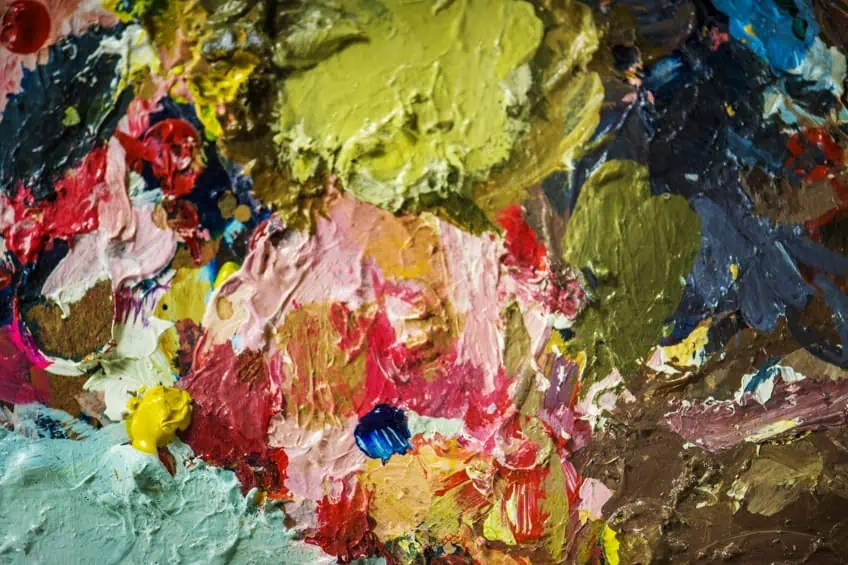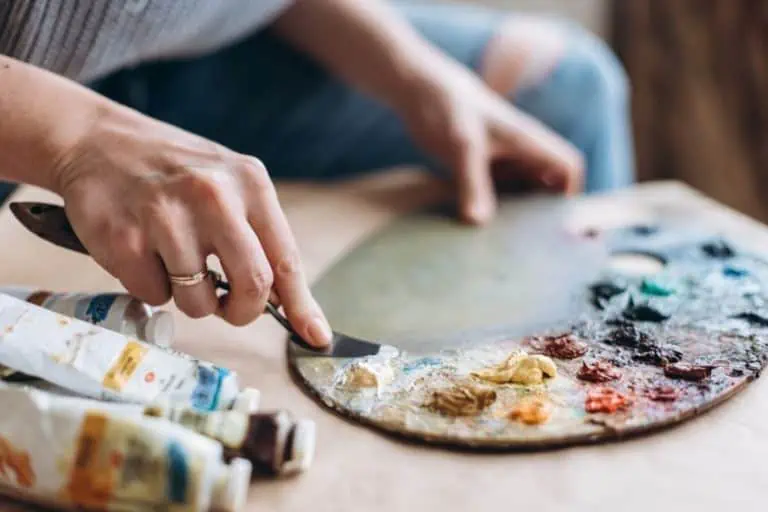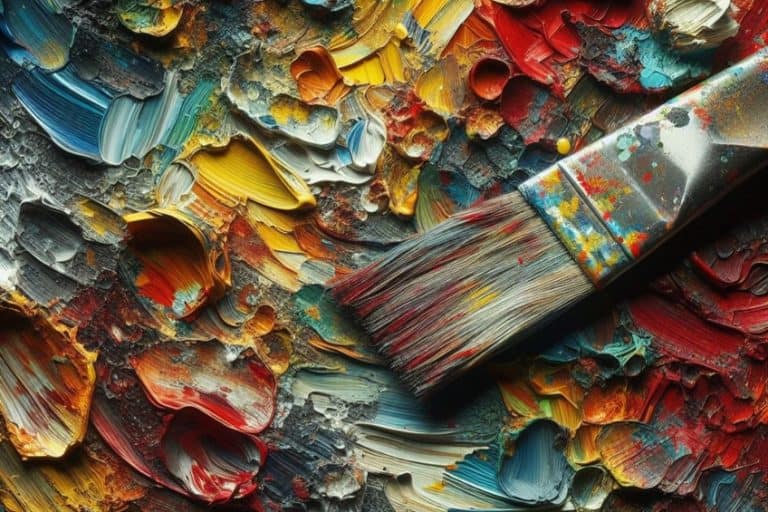How to Revive Acrylic Paint – A Step-by-Step Restoration Guide
This post may contain affiliate links. We may earn a small commission from purchases made through them, at no additional cost to you.
Hey fellow painters! Ever reached for your acrylics only to find them dried up and crusty? Fear not! In this guide, we’ll uncover the secrets to bringing your acrylic paints back to vibrant life. Get ready to revive those sad tubes and crusty palettes with a dash of DIY magic! Let’s dive in and make your canvases sing with color again!
Table of Contents
Key Takeaways
- Rehydrating acrylic paint can save resources and extend the paint’s usability.
- Techniques vary for reviving paints in tubes, on palettes, or on the canvas.
- Proper storage and handling prevent premature drying of acrylic paints.
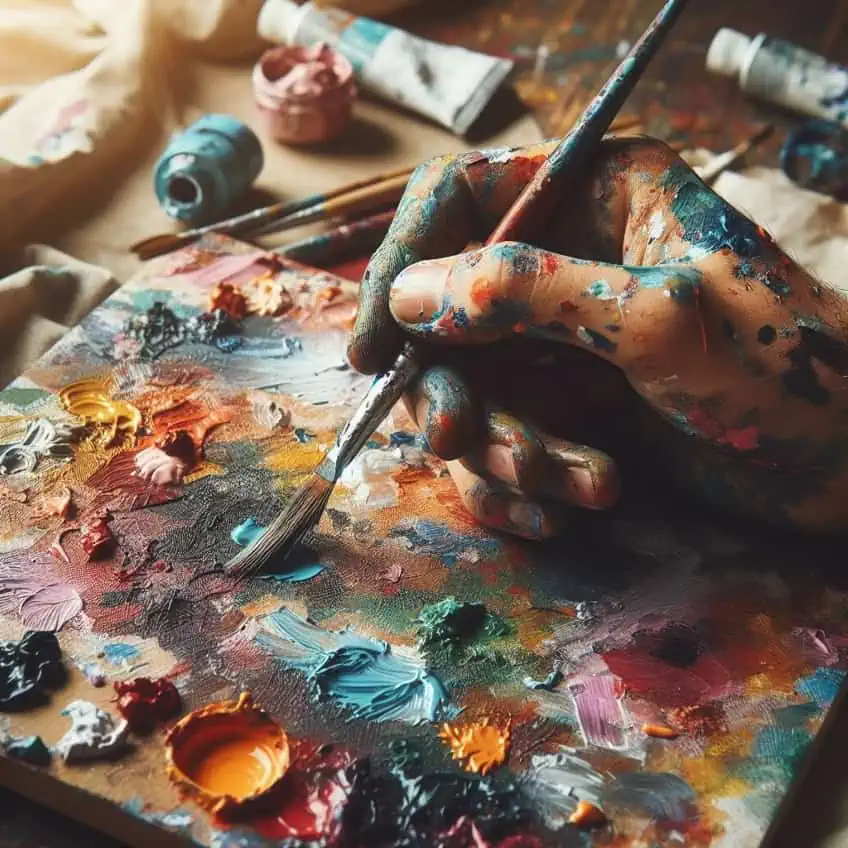
Why Has My Acrylic Paint Dried Out?
Acrylic paint may dry out for several reasons, often related to environmental factors and storage practices. They have a water-based composition which makes them prone to drying when exposed to air for prolonged periods.
- Exposure to air: Acrylic paints dry when the water in them evaporates into the air. If a paint container is not sealed properly after use, air can enter and begin the drying process.
- Temperature and humidity: High temperatures can accelerate the evaporation of water from acrylic paint, while low humidity levels may contribute to quicker drying times. Conversely, cold conditions can cause the paint to thicken, becoming less malleable.
- Long-term storage: Even when sealed, if acrylic paints are stored for an extended period, they may still dry out. The longevity of the paint can depend on the quality of the container’s seal and the inherent properties of the paint itself.
- Infrequent use: Paints that are seldom used are more likely to dry out simply because they are opened less frequently, and the owner may not notice they need to maintain the seal.
Reviving Dry Acrylic Paint
When artists encounter dried acrylic paint, they can often revive it through careful assessment and the correct rehydration techniques, ensuring the paint returns to a useable consistency without compromising its quality.
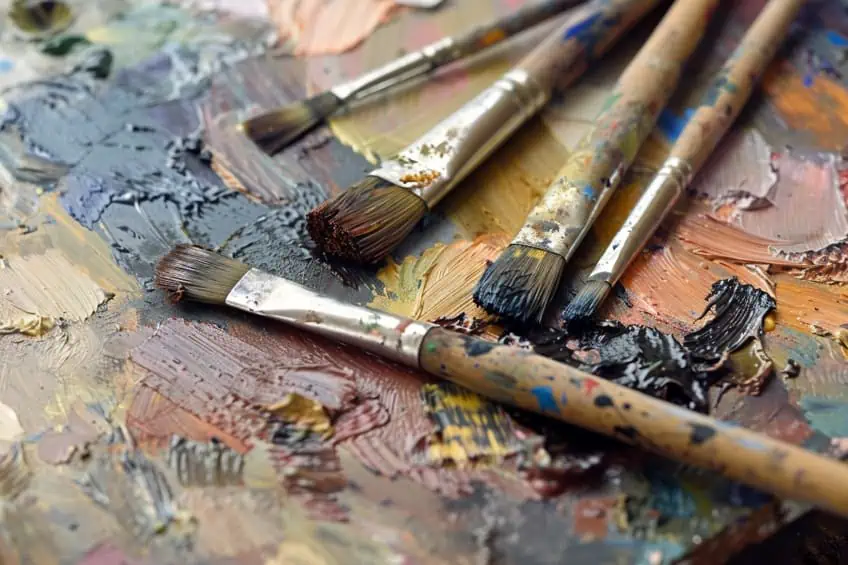
Assessing the Acrylic Paint Condition
The first step is to determine whether the dried acrylic paint is still viable. If the paint is thick but not completely hardened, it has the potential for recovery. Acrylic paints that are lumpy or have mold should not be used and must be discarded for health reasons and the quality of the artwork.
Rehydrating With Water and Mediums
To rehydrate the paint, one can start by adding water sparingly. A spray bottle can provide a fine mist that gently moistens the paint without oversaturation. If the water is not enough, an acrylic medium can assist in restoring the texture without diluting the color. Use these substances sparingly to avoid over-thinning.

Techniques for Mixing and Recovery
Once the paint has been moistened with water or acrylic medium, a palette knife should be used for mixing. The palette knife allows for a thorough blend, aiding in the distribution of moisture and helping remove any lumps present in the paint.
Continual folding and mixing with care can successfully revive acrylic paint, restoring its usability for further artistic endeavors.
How To Soften Hard Acrylic Paints In a Tube
When one discovers that their tube of acrylic paint has hardened, there are several methods to soften the content without damaging the pigment’s quality. It’s crucial to approach this process with care, ensuring the paint returns to a workable consistency. Firstly, one should assess the extent of hardening. If the paint is completely solid, it may be beyond rescue. For tubes with thickened but not fully hardened paint, the following method often proves effective.
- Begin with warm water: Place the sealed tube of acrylic paint in a bowl of warm water. Ensure the cap is tightly closed to prevent water from getting inside. The warm water can help loosen the hardened paint from the inside walls of the tube.
- Massage the tube: After several minutes, gently massage the tube, starting from the end and working toward the nozzle, to further help break up the thickened paint.
- Use a palette knife: If accessible, use a clean palette knife to stir the paint after squeezing it out onto a palette. It can break up any lumps and mix in any separated oils or mediums.
- Plastic wrap technique: If the paint remains thick, one may also try placing some of the paint onto a palette, covering it with plastic wrap, and letting it sit for a few hours. The plastic can help keep the moisture in, softening the paint.
- Regular checks: Periodically check the condition. Once softened, remove it from the palette and place it back into the tube using the palette knife if needed.

Preventing Acrylic Paint from Drying Out
Proper storage and handling techniques are essential to prevent acrylic paint from drying out, preserving its workability, and extending its shelf life. To prevent acrylic paint from drying out too quickly, remember these key tips: Always seal lids tightly after each use, store paint in a cool, dry spot away from direct sunlight, and consider transferring small amounts to airtight containers.
By understanding and implementing these measures, artists can maintain the workability and vibrancy of their paints for longer periods.
Optimal Storage Solutions
Using airtight containers is pivotal to maintaining the humidity and moisture levels around acrylic paints. Artists should store their paints in a cool, dry place, away from direct sunlight and at a stable temperature to prevent the paints from drying out prematurely. The containers should have a secure airtight seal to protect against air exposure. Transferring paints to smaller containers as they are used can minimize the amount of air that interacts with the paint.
- Temperature: Ideally between 60 – 75°F (15 – 24°C)
- Containers: Use containers with reliable caps; optionally add a layer of plastic wrap under the cap for an enhanced seal
- Humidity: A controlled environment with consistent humidity aids in prolonging paint viability

Using Additives and Sealers
Additives such as flow improver or stay-wet palettes can be used to maintain the paints’ moisture. A tiny amount of these additives can prevent the paints from thickening and drying out without diluting the pigment. Sealers may be employed to create a protective layer on the palette or artwork, locking in moisture and preventing the water-soluble components from evaporating.
- Flow improver: Add a few drops to the paint to enhance its consistency
- Sealers: Apply a seal to the paint surface to preserve moisture levels
Painting Techniques and Best Practices
Implementing painting techniques that mitigate the risk of drying can have a lasting impact on the paint’s usability. An example is the utilization of a stay-wet palette, which includes a moisture-retaining layer that helps keep paints usable for an extended period. Additionally, painters should always close paint containers after use to promote an airtight seal and shield the contents from air exposure.
- Stay-wet palette: Maintains moisture; significantly prolongs the working time of acrylics
- Airtight seal: Ensures caps are tightly closed after use; consider using a palette with a lid for short breaks.
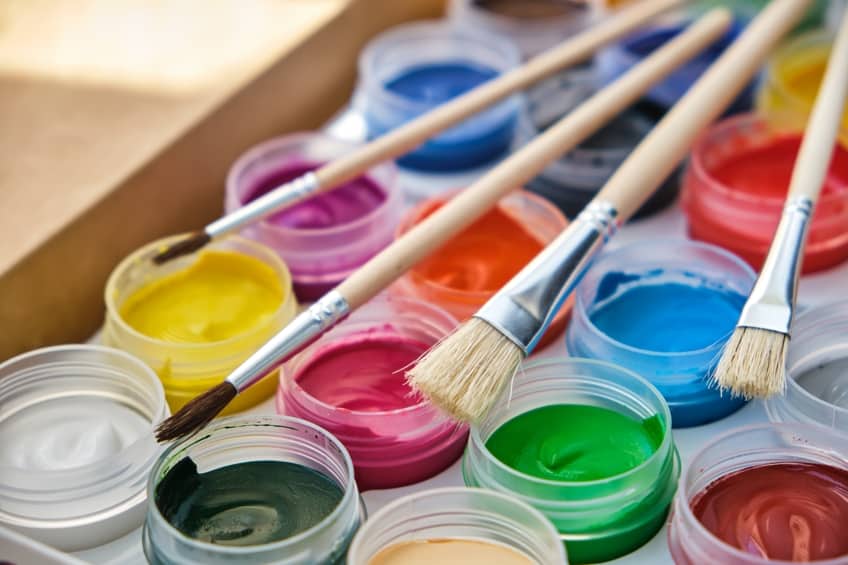
Now that you’ve mastered the art of reviving acrylic paint, there’s no limit to the colorful creations you can unleash! With just a few simple techniques and a sprinkle of creativity, you’ve transformed dried-up tubes into vibrant hues ready to breathe life into your next masterpiece. So, grab your brushes, embrace the magic of DIY, and let your creativity flow freely. Remember, the journey of art is as colorful as the paintings themselves. Happy painting!
Frequently Asked Questions
What Is the Best Method to Rehydrate Dried Acrylic Paint?
The optimal approach to rehydrate acrylic paint involves lightly misting the dried paint with water and then mixing it using a palette knife. The goal is to incrementally add moisture without over-diluting the paint’s pigment.
Can Dried Paint-by-Number Paints Be Restored to a Usable State?
Yes, dried paint-by-number paints can often be rejuvenated. The same technique of using a fine spray of water and careful mixing applies. Some may also benefit from a small addition of acrylic medium to restore consistency.
Are There Ways to Revive Dried Acrylic Paint in a Tube?
To revive acrylic paint in a tube, one can cut open the tube, remove the paint, and mix it with an acrylic medium to restore its original consistency. Vigorous mixing may be required to evenly distribute the medium throughout the paint.
In 2005, Charlene completed her wellness degrees in therapeutic aromatherapy and reflexology at the International School of Reflexology and Meridian Therapy. She worked for a company offering corporate wellness programs for several years before opening her own therapy practice. In 2015, she was asked by a digital marketer friend to join her company as a content creator, and it was here that she discovered her enthusiasm for writing. Since entering the world of content creation, she has gained a lot of experience over the years writing about various topics such as beauty, health, wellness, travel, crafting, and much more. Due to various circumstances, she had to give up her therapy practice and now works as a freelance writer. Since she is a very creative person and as a balance to writing likes to be active in various areas of art and crafts, the activity at acrylgiessen.com is perfect for her to contribute their knowledge and experience in various creative topics.
Learn more about Charlene Lewis and about us.
